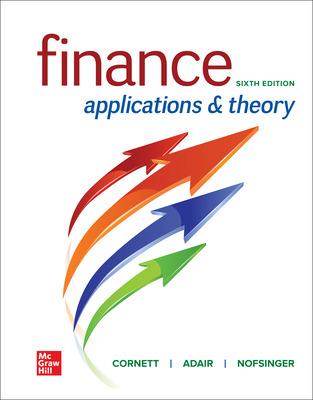Question
Please analyze this Case - Starbucks' Foreign Direct Investment, using the Harvard Business School format found in your syllabus, and be sure and answer the
Please analyze this Case - Starbucks' Foreign Direct Investment, using the Harvard Business School format found in your syllabus, and be sure and answer the questions at the end of the case.
Forty years ago, Starbucks was a single store in Seattle's Pike Place Market selling premium-roasted coffee. Today, it is a global Toaster and retailer of coffee, with more than 28.000 stores in 76 countries. Starbucks set out on its current course in the 1980s when the company's director of marketing. Howard Schultz, came back from a trip to Italy enchanted with the Italian coffee- house experience. Schultz, who later became CEO. persuaded the company's owners to experiment with the coffechouse for. mat-and the Starbucks experience was born. The strategy was to sell the company's own premium roasted coffee and freshly brewed espresso-style coffee beverages, along with a variety of pastries, coffee accessories, teas, and other products, in a taste- fully designed coffeehouse setting. From the outset, the company focused on selling "a third-place experience," rather than just the coffee. The formula led to spectacular success in the United States, where Starbucks went from obscurity to one of the best- known brands in the country in a decade. Thanks to Starbucks, coffee stores became places for relaxation, chatting with friends. reading the newspaper, holding business meetings, or (more recently) browsing the web. In 1995, with 700 stores across the United States, Starbucks began exploring foreign opportunities. The first target market was Japan. The company established a joint venture with a local retailer, Sazaby Inc. Each company held a 50 percent stake in the venture: Starbucks Coffee of Japan. Starbucks initially invested $10 million in this venture, its first foreign direct investment. The Starbucks format was then licensed to the venture, which was charged with taking over responsibility for growing Starbucks' presence in Japan. To make sure the Japanese operations replicated the "Starbucks experience" in North America, Starbucks transferred some employees to the Japanese operation. The joint venture agreement required all Japanese store managers and employees to attend training classes similar to those given to U.S. employees. The agreement also required that stores adhere to the design parame- ters established in the United States. In 2001, the company introduced a stock option plan for all Japanese employees, making it the first company in Japan to do so. Skeptics doubted that Starbucks would be able to replicate its North American success overseas, but by the end of 2018 Starbucks had some 1;286 stores and a profitable business in Japan. Along the way, in 2015. Starbucks acquired Starbucks Coffee of Japan, making the stores wholly owned as opposed to licensed. After Japan, the company embarked on an ageressive foreign investment program. In 1998, it purchased Seattle Coffee, a British coffee chain with 60 retail stores, for $84 million. An American couple, originally from Seattle, had started Seattle Coffee with the intention of establishing a Starbucks-like chain in Britain. By 2018, Starbucks had almost 1.000 stores in the United Kins dom. In the late 1990s, Starbucks also opened stores in Taiwan, China, Singapore, Thailand, New Zealand. South Korea, and Malaysia. In Asia, Starbucks' most common strategy was to license its format to a local operator or joint venture partner I return for initial licensing fees and royalties on store revenues. As in Japan, Starbucks insisted on an intensive employee-trainin' program and strict specifications regarding the format and layout of the store. China has developed into Starbucks fastestgrowing market and is now second only to the United States in terms of store coul, and revenues. Although China has historicaly. been a nation of tea drinkers, the third-place coffee culture pioneered by Starbucks has gained significant traction in nations large cities were wealthy and middle-class customers will pay five dollars for a cup of coffee. As with many other nations, Starbucks originally entered China by setting up a Joint venture with the local company in licensing its format to that entity. That changed in 2018 one Starbucks bought out it's East China venture partner in order to attain greater control over its growth strategy. According to Belinda Wong, CEO of Starbucks China operations, "Full ownership will give us the opportunity to fully leverage the company's robust business infrastructure to deliver an elevated coffee, in store third place experience and digital innovation to our customers and further strengthen the career development opportunities for all people." The company now aims to have 6000 wholly owned stores in China by the end of 2022, up from 3500 at the end of fiscal 2018.
1.) Where did the original idea for the starbucks format come from? What lessons for international business can be learnt from this?
2.)What drove Starbucks to start expanding internationally? Is this strategy in the best interests of it's company's shareholders?
3.) Why do you think Starbucks's decided to enter the Japanese market via a joint venture with a Japanese company? What lessons can be drawn from this?
4.)What drove Starbucks to shift from a joint venture strategy in China to run the operation through a wholly owned subsidiary? What are the benefits here? What are the potential risks and costs? Do you think this was the correct decision?
Step by Step Solution
There are 3 Steps involved in it
Step: 1

Get Instant Access to Expert-Tailored Solutions
See step-by-step solutions with expert insights and AI powered tools for academic success
Step: 2

Step: 3

Ace Your Homework with AI
Get the answers you need in no time with our AI-driven, step-by-step assistance
Get Started


